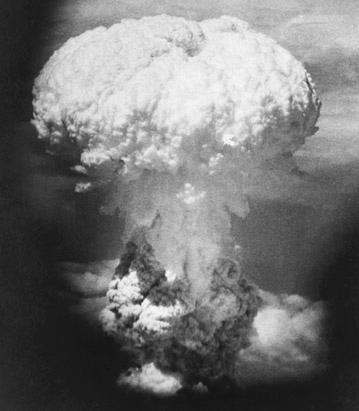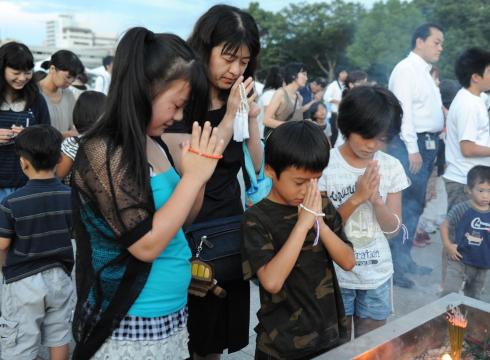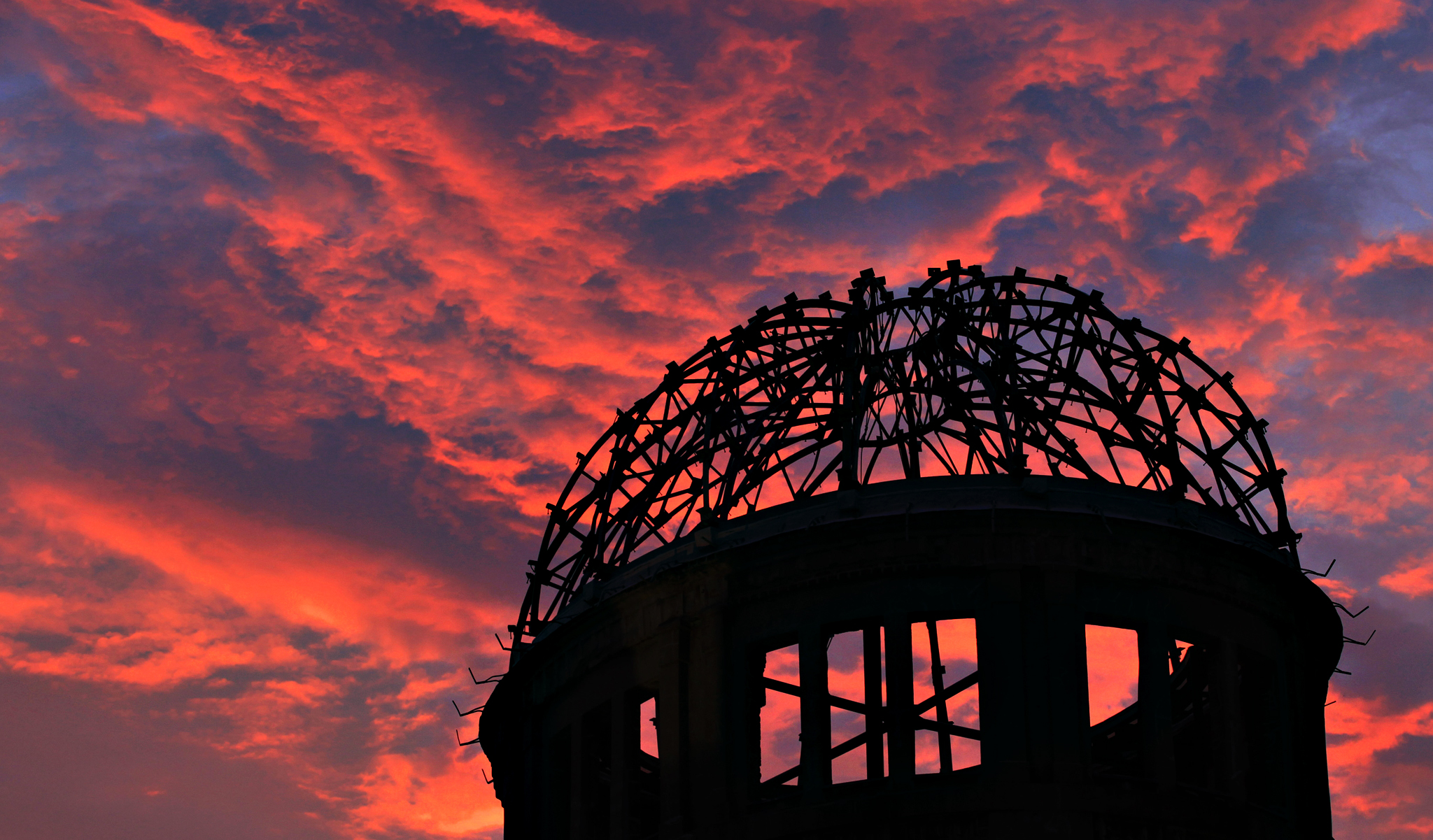People that were unfortunate (or fortunate) enough to be near the epicenter of the atomic blast in Hiroshima 69 years ago today were instantly vaporized. They left only their outlines on pavement or walls, throwing a lengthening shadow on the nation that developed and used such weapons on a civilian population.
 The long, slow march to America’s loss of its soul began with a lie that still holds sway today. It is a lie that has calcified into fact despite its historical falseness: “The atomic bombings ended the war and saved a million American servicemen’s lives.”
The long, slow march to America’s loss of its soul began with a lie that still holds sway today. It is a lie that has calcified into fact despite its historical falseness: “The atomic bombings ended the war and saved a million American servicemen’s lives.”
Billions of dollars, and the combined focus of thousands of America’s best and brightest scientific minds that developed and tested the first atomic bomb at the unholy Trinity site, probably made their use on two Japanese cities at the end of World War II a foregone conclusion.
But year after year we rationalized their use, despite the truth that emerged since the war, and the justification steadily shrank the American heart, until the spirit finally gave out in the early 1990’s after the first Gulf War. That’s why the atomic bombings of Hiroshima and Nagasaki mark the beginning of the long descent of America into its present spiritual and social malaise.
Today, on the 69th anniversary of the bombing, Hiroshima is not even mentioned in the nation’s most prominent newspaper, the New York Times. Yet one of its prominent columnists, referring to children fleeing gang violence in Central America (fueled and fomented largely by gang and drug activity in the United States), obtusely asks, “How has our nation of immigrants soured into such a cruel place toward displaced children?”
the Japanese had signaled they would surrender as long as they could keep their emperor, Those were precisely the terms under which they did surrender after two cities had been leveled and over 200,000 lives snuffed out.
But President Truman and James Byrnes, nicknamed the “Assistant President,” wanted to show the Soviet Union the destruction the United States was capable of unleashing on them. As Manhattan Project scientist Leo Szilard said after he met with Byrnes on May 28, 1945: “Byrnes thought that Russia might be more manageable if impressed by American military might, and that a demonstration of the bomb might impress Russia.”
The Manhattan Project is the ultimate example of how science and scientists can serve death and destruction. It is a lesson that has yet to be learned, because science and technology have become idols in man’s war on the earth.
America has yet to approach the moral threshold that we, and humanity, crossed on August 6, 1945. In a retrospective on the bombings, and a world class example of the intellectual’s evasion, David Kennedy, a professor at Stanford, wrote, “Long range B-29 bombers systematically undertook fire-bombing raids that consumed 66 of Japan’s largest cities and killed as many 900,000 civilians—many times the combined death tolls of Hiroshima and Nagasaki.”
Back during the depths of the Cold War, there was talk of developing (or having developed) a neutron bomb, which would kill people but leave buildings and infrastructure intact. At a spiritual level, especially since the black dawn of the new millennium, we, as a nation and a species, have been metaphorically detonating one neutron bomb after another around the world. Through detonations of despair and hopelessness, bodies have been left intact while hearts have been vaporized. That’s the real meaning of a zombie.
Since 9.11, the nation has another bar to clear, a bar much higher than the glib expression by President  Obama this week, “we tortured some folks.” The fear of terrorism has replaced the fear of nuclear war, allowing states like Israel (America’s closest ally), to terrorize the people that it imprisons in Gaza.
Obama this week, “we tortured some folks.” The fear of terrorism has replaced the fear of nuclear war, allowing states like Israel (America’s closest ally), to terrorize the people that it imprisons in Gaza.
Far too many people believe that the acknowledgement of a truth means being confined to it forever. But just the opposite is the case—to change anything, we have to face the truth, however painful it is.The long road back to recovering and restoring America’s soul begins with acknowledging its loss.
The human spirit is very resilient, but not infinitely so. The bombs represent the dominance of the cold reason of the machine over the potential for understanding and compassion of the human heart. Only developing that capacity within us can insure our inward and outward survival in the crowded place and space that the world has become.
I once heard a religious philosopher say: “The universe is in a state of meditation.” From my own contemplative experiencing, I feel that’s true. Man violated the very essence of the universe by using the power of the stars to incinerate tens of thousands of people.
Atomic weapons are not part of humanity’s past as most people believe, and they will probably be used again, given the division, resignation and cynicism sweeping the globe. Whether humankind changes course at that point or not depends on whether the hearts and spirits of enough people remain intact, and a new foundation for a minimally true world order has been poured.
Martin LeFevre

